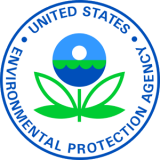EPA Inspection Reveals Violations of Renovation, Repair and Painting Rule by Renovators at the Kansas City Power & Light Building
09/12/2016
Contact Information:
Ben Washburn (washburn.ben@epa.gov)
913-551-7364
Environmental News
FOR IMMEDIATE RELEASE
 (Lenexa, Kan., Sept. 12, 2016) - EPA Region 7 conducted a random inspection for lead-based paint renovation work practices at the Kansas City Power & Light building in Kansas City, Mo., in June 2015, which revealed violations of the Renovation, Repair and Painting (RRP) Rule. As a part of a settlement, Jim Plunkett, Inc., of Kansas City, Mo., has agreed to pay a civil penalty of $4,690 and B&R Insulation of Lenexa, Kan., has agreed to pay a civil penalty of $7,900.
(Lenexa, Kan., Sept. 12, 2016) - EPA Region 7 conducted a random inspection for lead-based paint renovation work practices at the Kansas City Power & Light building in Kansas City, Mo., in June 2015, which revealed violations of the Renovation, Repair and Painting (RRP) Rule. As a part of a settlement, Jim Plunkett, Inc., of Kansas City, Mo., has agreed to pay a civil penalty of $4,690 and B&R Insulation of Lenexa, Kan., has agreed to pay a civil penalty of $7,900. According to an administrative consent agreement and final order filed by EPA Region 7 in Lenexa, Kan., the inspection revealed that Jim Plunkett, Inc., and B&R Insulation, Inc., failed to provide the Renovate Right pamphlet to the owner; failed to retain records for three years; failed to post signs that clearly define the work area; failed to remove all objects from the work area, or cover them with plastic sheeting or other impermeable materials with all seams and edges taped or otherwise sealed; failed to close all doors and windows within the work area; and failed to mist the sheeting before folding it, fold the dirty side inward, and either tape shut or seal in heavy-duty bags. B&R Insulation also failed to apply for and obtain EPA certification prior to commencing the renovation.
The companies performed window replacement of approximately 850 windows in the Kansas City Power & Light building in downtown Kansas City, Mo. The structure is a commercial building built in the 1930s which is being converted into more than 200 residential apartments.
The RRP Rule requires that contractors who work on pre-1978 dwellings and child-occupied facilities are trained and certified to use lead-safe work practices. This ensures that common renovation and repair activities like sanding, cutting and replacing windows minimize the creation and dispersion of dangerous lead dust. EPA finalized the RRP Rule in 2008 and the rule took effect on April 22, 2010.
This enforcement action addresses RRP Rule violations that could result in harm to human health. Lead exposure can cause a range of adverse health effects, from behavioral disorders and learning disabilities to seizures and death, putting young children at the greatest risk because their nervous systems are still developing. Today at least 4 million households have children that are being exposed to high levels of lead. There are approximately half a million U.S. children ages 1-5 with blood lead levels above 5 micrograms per deciliter (µg/dL), the reference level at which the Centers for Disease Control recommends public health actions be initiated.
# # #
Learn more about EPA’s Renovation, Repair and Painting Program